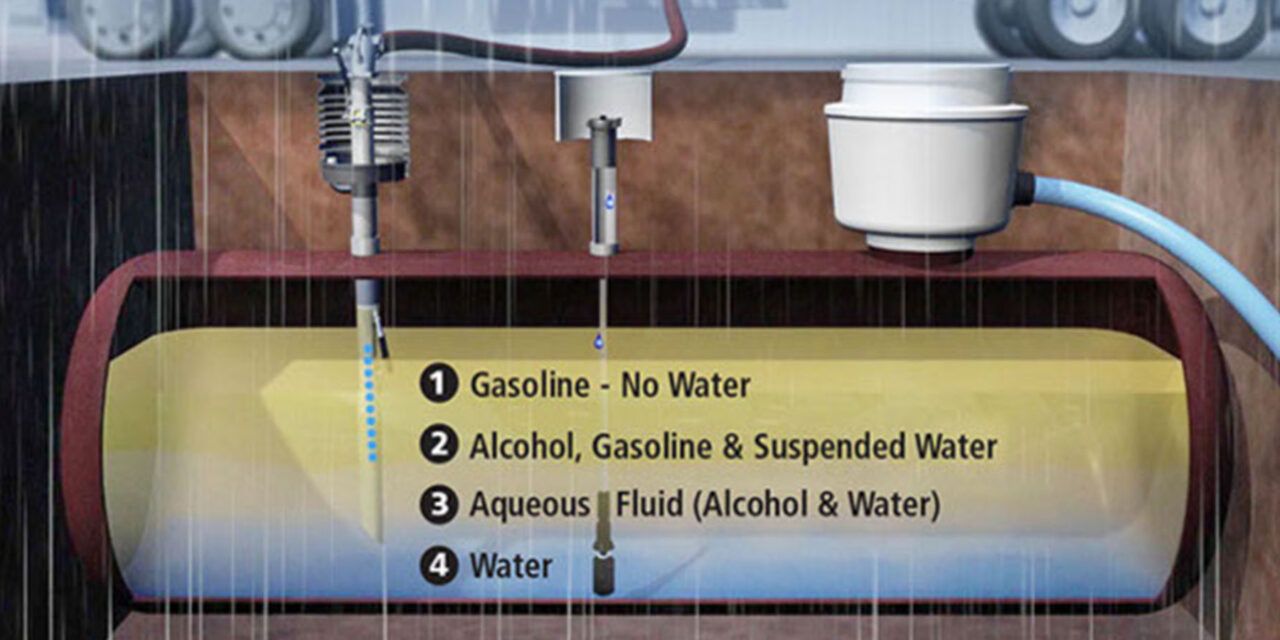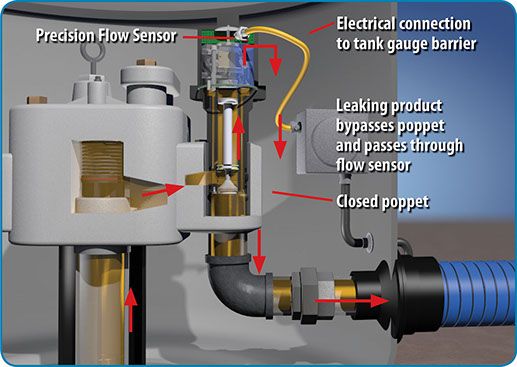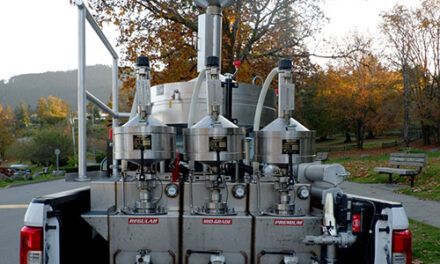
ATG advancements tame temperature false alarms

ATG advancements tame temperature false alarms
by: Pete Neil
It takes very little water to cause phase separation, a process that can lead to four distinct layers of inventory inside the tank. / Image courtesy of OPW Fuel Management Systems
OPW’s Model 327 volumetric line leak detector utilizes a highly accurate flow sensor to capture flow volume data. / Image courtesy of OPW Fuel Management Systems

OPW’s Model 327 volumetric line leak detector measures actual leak rates to provide more accurate measurements than pressure-decay methods. Image courtesy of OPW Fuel Management Systems

OPW’s aqueous ethanol float sensor continuously monitors fuel quality, providing real-time, thermal-corrected density readings. Image courtesy of OPW Fuel Management Systems
Many Canadian fuel site operators are familiar with this painful truth: temperature has a profound effect on fueling operations, often causing retailers fuel inventory management headaches. Thankfully, manufacturers are beginning to develop tank gauging solutions specifically designed to limit these headaches. Advancements in line leak detection and phase separation detection are two such examples.
Line Leak Detection
Some areas of Canada are beginning to require line leak detectors (LLDs) at fuel dispensing facilities. Regardless of regional regulatory nuances, Canadian fuel site operators need to take line leak detection seriously. Here’s why: according to the Petroleum Equipment Institute, more than half the leaks that occur in underground fuel storage systems happen in piping.
There are three basic types of leak detectors: mechanical line leak detectors (MLLDs), pressurized line leak detectors (PLLDs) and volumetric line leak detectors (VLLDs).
Mechanical line leak detectors (MLLD) monitor pressure when the pump is turned on, allowing a small amount of product to flow and create pressure in the pipe. If the MLLD detects a lack of pressure (a sign of a leak), it restricts the flow of fuel to the dispenser. MLLDs only detect catastrophic leaks of 11.4 or more liters per hour.
Pressurized line leak detectors (PLLDs) use algorithms to equate pressure decay into a volume loss to determine if a line is tight. Volumetric line leak detectors (VLLDs) maintain a constant line pressure during testing by continuously running the pump to measure flow rates. Both PLLDs and VLLDs are considered electronic line leak detectors (ELLD), which operate in conjunction with an automatic tank gauge to detect large leaks (11.4 lph or higher) as well as much smaller leaks (.76 lph and .38 lph).
Unfortunately, MLLDs and PLLDs are both vulnerable to thermal conditions. If the temperature of the product decreases as it moves from the tank into the piping, the volume of the product decreases. This causes a loss of pressure in the line. MLLD and PLLD systems are susceptible to false alarms due to thermal contraction. MLLDs will slow flow, while automatic tank gauging systems with PLLDs will issue an alarm, shutting the pump down.

Phase Separation Detection
When enough water mixes with ethanol-blended fuel, the ethanol absorbs the water molecules. The water-saturated alcohol molecules become too heavy to remain suspended in the gasoline solution. They drop to the bottom of the tank, creating layers of different mixtures of product, including an equipment-damaging alcohol and water (aqueous ethanol) layer. This process is known as phase separation.
Phase separation detection is another aspect of fuel monitoring that is vulnerable to false alarms that are predicated by temperature swings. There are two primary types of phase separation monitoring devices: a phase separation float, which is weighted to a specific density of the aqueous fluid, and a phase separation sensor, which continuously monitors for fluctuations in product density.
Both devices monitor water heights (the primary contributing factor to phase separation) and prompt ATGs to issue alarms. However, float-based phase separation detection devices are unable to account for thermal changes inside a UST. For instance, fuel inside a tanker heats up on warm days. When that warm fuel is added to the cooler fuel in the UST, this temperature change causes the density of the product to fluctuate. Float-based phase separation devices are unable to account for the thermal change and subsequent density fluctuation, which results in false phase separation alarms.
ATG Advancements
Fuel site operators frustrated by false line leak or phase separation alarms have been known to override the system settings to prevent the pump from shutting down. This stop-gap measure should be avoided at all costs, as it puts the site at risk of failing to detect an authentic (and costly) problem in a timely manner.
New volumetric line leak detectors measure actual leak rates to provide more accurate measurements than pressure-decay methods. In addition, new VLLDs can perform gross/catastrophic line leak tests even if the STP motor is in a continuous run state while no dispensing is taking place (some PLLDs perform tests only after the pump has stopped running). Further, ATGs equipped with VLLDs require pressure equalization between the line and the motor before the test starts. Because pressure equalization is established before testing, the likelihood of false alarms caused by thermal contraction is eliminated.
New aqueous ethanol float-sensor solutions utilize a sensor to continuously monitor fuel quality to provide real-time, thermal-corrected density readings that accurately account for temperature changes in the UST. In addition, compatible tank gauges can be programmed at specific density thresholds to issue a warning, and then if conditions continue to deteriorate the system will trigger an alarm to shut the pump down.
By eliminating false alarms, new line leak detection and phase separation monitoring solutions help fuel retailers keep product flowing, ensure their fuel quality is on point and help prevent catastrophic compliance incidents. A full-featured tank gauging system supported by advanced monitoring components such as aqueous ethanol sensors and VLLDs will help streamline operations overall to ensure fuel retailers can focus on growing their bottom line.
Pete Neil is the global product manager at OPW Fuel Management Systems, based in Hodgkins, IL. Neil has considerable expertise in tank monitoring equipment solutions. He can be reached at pete.neil@doverfs.com. For more information about OPW, please visitwww.OPWGlobal.com.


































